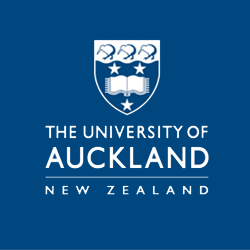
What about our Talented Students? An Exploratory Study – Phase 1
Status
Completed: 10 August 2010
Project Details
A project completed in 2010, undertaken by The University of Auckland, to investigate the current provision for talented students across four faculties, within one tertiary institution in Aotearoa-New Zealand.
Aims:
The main aims of the project were to:
- ascertain the experiences of talented learners across four faculties at the University of Auckland
- enhance both the identification practices and the learning and experiences of talented students
- identify what provisions, if any, there are for talented undergraduate students at the University of Auckland
- develop an understanding of talented students in order to learn how to enhance their learning outcomes.
Methodology:
The project used a mixed methods approach involving:
- a review of the literature in relation to talented students
- staff and students from the four faculties participating in separate focus groups so that their perceptions of talented students could be gained and how they were currently being catered for within the University environment could be ascertained.
- Analysing data using a grounded theory approach which resulted in four major themes being identified (see findings below).
Team

Professor Christine Rubie-Davies
Project Leader
The University of Auckland
Sandy Farquhar
The University of Auckland
Cath Rawlinson
The University of Auckland
Heather O’Neill
The University of Auckland
Anne Sinclair
The University of Auckland
Paul Heyward
The University of AucklandStatus
Funding
$10,000.00 (excl GST)
Key Findings
The key findings from the project identified the following four major themes:
- How talented students were defined: Most staff and students defined talented students in relation to what may be thought of as schoolhouse giftedness which referred to students as having high academic achievement, succeeding academically in some way, showing creativity in thinking and possessing various personal characteristics indicative of having high levels of academic motivation. Hence, they were representative of qualities associated with high achievement or ability in school. In every focus group, both staff and students mentioned achieving high grades as showing that students were talented.
- How talented students were identified: In a university environment, where students are often in large lecture theatres, the researchers were interested in the ways that talented students were identified. As shown above, at times recognition related to students showing initiative and directly approaching lecturers. But a range of other methods for identifying talented students was expressed. One obvious means of identifying students was through grades and marks achieved in examinations. In one faculty, in particular, identification of talented students began before they had entered the university.
- Opportunities for talented students that supported their learning: Faculties varied in the ways in which they catered for talented students. There was no university system specifically set up to support the learning and experiences of talented students and hence systems that had developed had mostly been put in place by interested and enthusiastic lecturers. Even where established systems were present these had been initiated by specific staff members. Generally, the ways in which student learning and experiences were enhanced fell into six broad areas: individual lecturers, early identification, facilitative and leadership opportunities, specific provisions, recognition, and catering for diversity.
- Issues for talented students: While some departments and faculties appeared to be making, at times, considerable effort to cater for their talented students, there were aspects of some students’ experiences at university that were identified as being less positive. Some lecturers recognised that talented students’ experiences were not always positive but, perhaps not surprisingly, negative experiences were reported more frequently by students.
Key Recommendations
The key recommendations from the project included:
Identifying talented students through grades | Early identification of talented students appears to contribute to their success and on-going participation in tertiary education. In most instances grades and marks are going to lead to identification. Where possible it is recommended that student marks/passes in NCEA from secondary school are made available to staff when students begin their first year. However, it is recognised that this will not always be possible but is likely to be so in programmes that have selection requirements. Where it is not feasible or practical to make grades/ marks available, it is recommended that at the end of each semester, staff are made aware of students scoring A grades in specific courses or programmes. These would be students to target for the types of potential interventions outlined below.
Other means of identifying talented students | Grades were not the only means of identifying talented students. Grades are a necessary but not sufficient condition for identification of talented students. It is also recommended that staff be alert to students who ask challenging and unusual questions as well as those who provide answers to questions that show high levels of depth and understanding. Such students may also be invited to take part in the programme developed for talented students. In some faculties/departments/schools, particular personality characteristics and social behavioural patterns may also be necessary to indicate talent in that field of endeavour. For example, in professions that involve working closely with children and adults, students considered talented would need to be able to interact appropriately with their clients.
Moodle or Facebook page for talented students | The idea of a Moodle or Facebook page for talented students was strongly recommended. Such a page could provide a venue for announcements related to working on research projects, meetings of the group, opportunities to attend professorial presentations and seminars, and mentoring opportunities. Students suggested that they would appreciate the opportunity to hear postgraduate students presenting their research.
Guidelines for meeting the needs of talented undergraduate students | The strategies and procedures outlined in the main report provide guidelines and recommendations to better meet the needs of talented undergraduate students in a tertiary environment. Institutions would select from a range of strategies and procedures to suit individual contexts.
Future developments | It is proposed to develop an intervention to be trialled next year in four schools across the Faculty of Education. The faculties involved in the current project will be sent a summary of the findings and also the proposed intervention for the Faculty of Education. Also, it is anticipated that in the future other institutions would be approached to work towards implementing a programme for talented students in one or more schools, departments or faculties in their own institutions.
A research report prepared by Christine Davies, Sandy Farquhar, Catherine Rawlinson, Heather O’Neill, Paul Heyward and Anne Sinclair.
(PDF, 791 KB, 26-pages).
- 30 August 2010